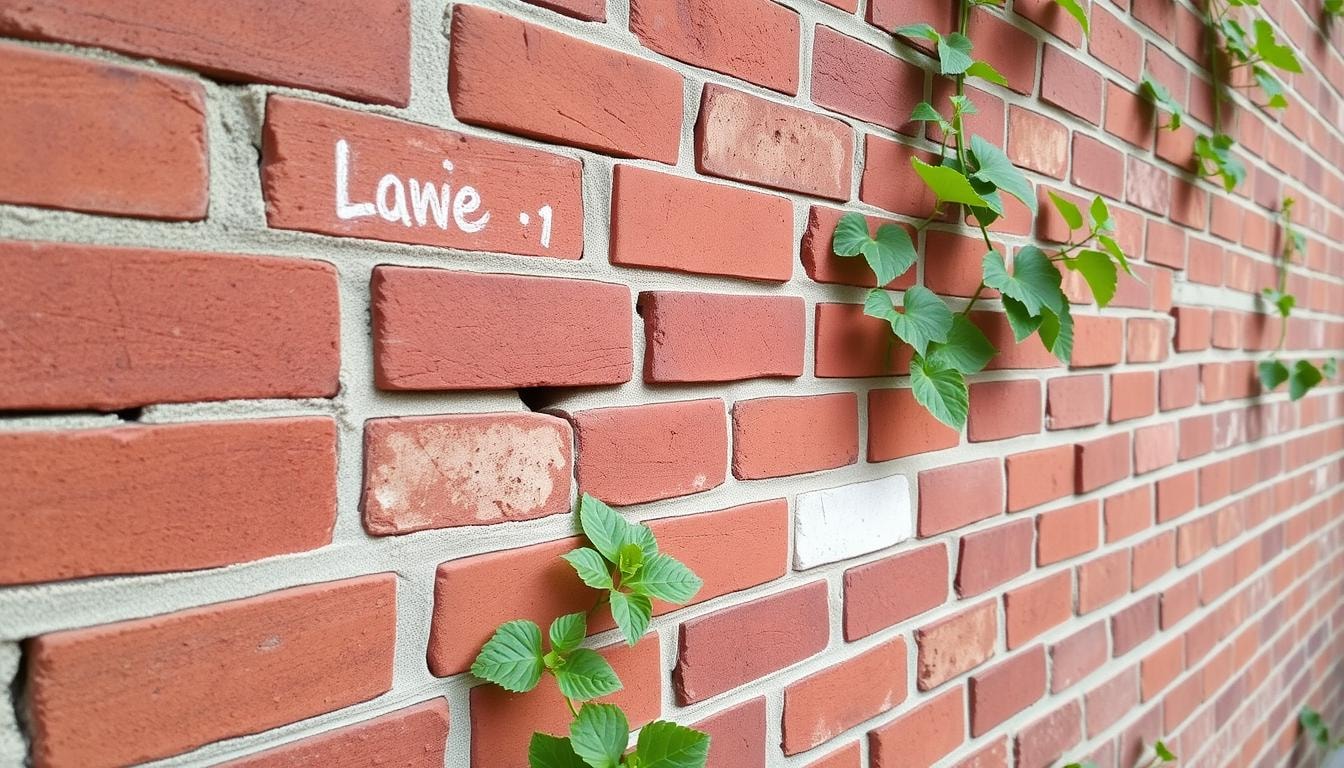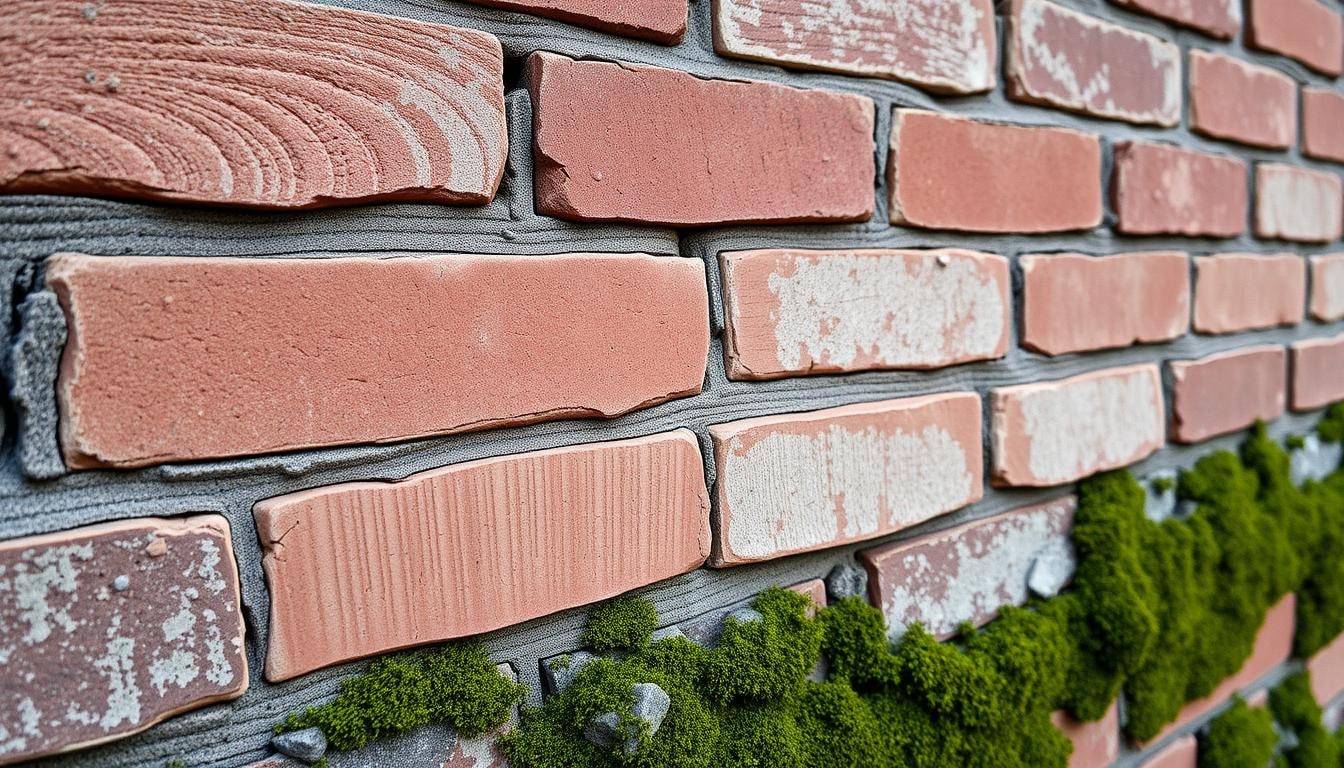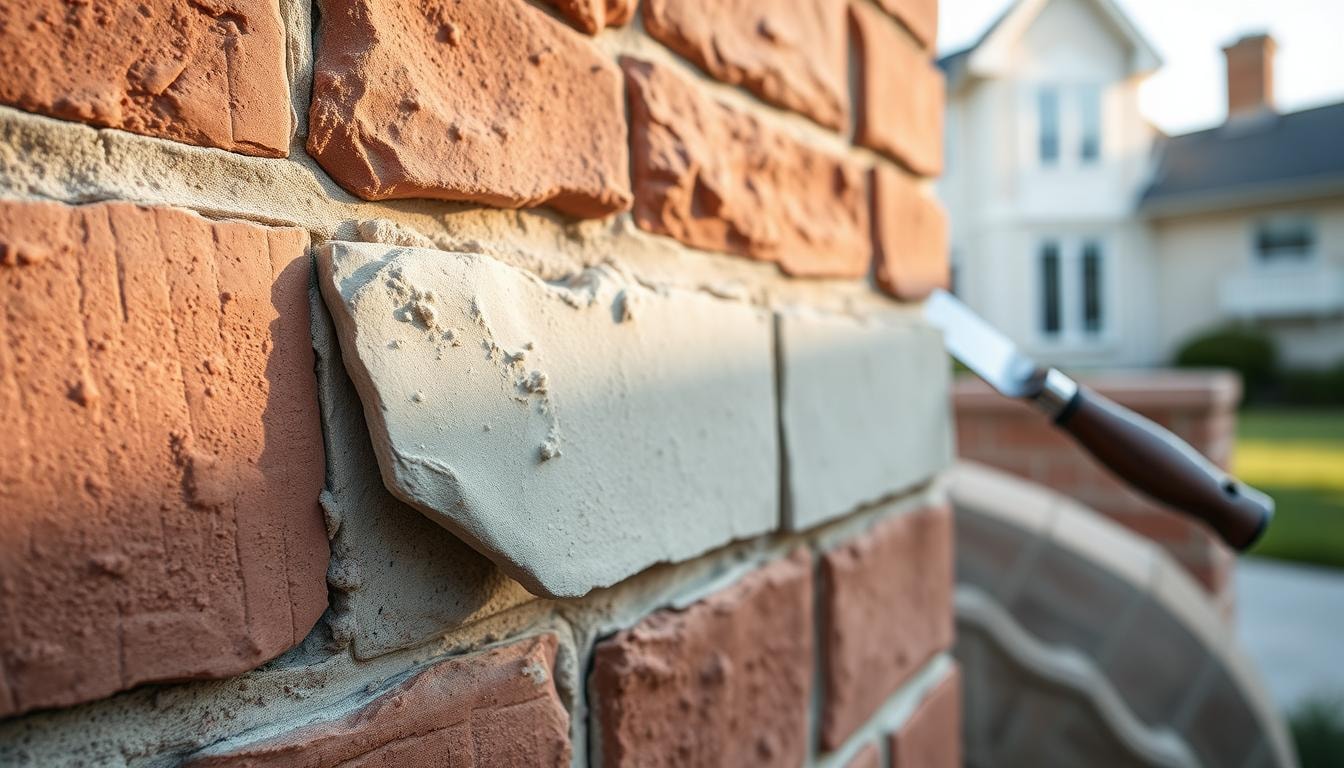Tuckpointing Near You
Can’t find what you are looking for?
How It Works
-
Answer a few questions about your home project.
-
Within seconds, get matched with top-rated local pros.
-
Compare quotes and choose the best pro for the job.
Tuckpointing In Your Area
Need Tuckpointing? Here’s What You Should Know
Meta Description: Discover the essentials of tuckpointing, from costs to DIY options. Learn how this vital masonry repair can protect your brick structure and enhance its appearance.

Have you checked your building’s brick façade lately? Brick structures are tough, but they need care over time. Crumbling joints can become unsightly and dangerous.
If ignored, they can cause water damage and weaken the structure. Tuckpointing is crucial for maintaining brick buildings. Let’s explore why it’s so important.
Key Takeaways
- Brick facades can last hundreds of years, but mortar joints typically require attention every 20-30 years.
- Tuckpointing can dramatically improve a wall’s structural integrity and create a more waterproof envelope.
- Visual inspections can reveal signs of mortar joint deterioration, such as cracks, crumbling, or discoloration.
- Tuckpointing is a labor-intensive process, but a worthwhile investment to safeguard the building’s structural integrity.
- The cost of tuckpointing can vary widely, depending on factors like location, size of the area, and type of structure.
What is Tuckpointing?
Tuckpointing, or repointing, fixes mortar joints in brick walls. It involves removing old mortar and adding fresh mortar or grout. This repair addresses mortar wear caused by weather conditions.
Tuckpointing vs. Repointing
Tuckpointing and repointing are similar, but their end results differ. Tuckpointing creates a nice look by contrasting new and old mortar. This method became popular in 18th century England.
Repointing focuses on fixing mortar joints without adding decoration. Both methods use specialized tools and techniques for brick compatibility.
These processes help control silica exposure and ensure occupational safety. Vacuum dust collection systems are often used. Proper tuckpointing improves wall strength and waterproofing.
Why is Tuckpointing Important?
Tuckpointing keeps brick buildings strong. It fixes mortar joints to stop water damage. Without it, mold and pests can enter, causing health and structural problems.
This crucial process prevents costly future repairs. Experts recommend tuckpointing every 25-30 years. Factors like humidity and temperature may change this timeline.
Look for cracked or missing mortar joints. These signs mean you need tuckpointing right away.
Quality mortar is key for lasting repairs. Choose materials and techniques carefully for the best results. Regular upkeep prevents expensive fixes later on.
Water stains on brick walls can indicate bad mortar. Address these issues promptly to avoid bigger problems.
Neglecting tuckpointing may lead to replacing the entire masonry facade. This costs much more than timely maintenance. Proper tuckpointing can also boost a building’s value.
Signs That You Need Tuckpointing

Keeping your building’s masonry strong is vital. Tuckpointing often fixes issues that come up. Learn the signs that show your brick or mortar needs help.
Cracked or Missing Mortar
Cracked or missing mortar between bricks is a clear sign you need tuckpointing. This can let water in and cause more damage. It can also weaken the wall’s structural integrity.
Regular visual inspections help spot any cracked mortar or missing mortar. Catching these issues early can prevent bigger problems later on.
Loose or Crumbling Bricks
When mortar integrity fails, it can lead to loose bricks or crumbling bricks. A simple scratch test with a key can check the mortar’s condition.
This test helps decide if tuckpointing is needed to stop water penetration. It also helps maintain the building’s structural soundness.
Quick action through tuckpointing stops further damage. It keeps your structure safe for years to come. Regular checks and fast fixes protect your masonry’s beauty and strength.
Tuckpointing Lifespan and Timing
Mortar joints in brick structures typically last 20 to 30 years. This depends on materials used and local weather conditions. It’s vital to fix mortar problems as soon as they’re spotted.
Loose bricks in a building’s facade need immediate attention. They may be too damaged for simple tuckpointing to work. Cracks or crumbling mortar are signs that tuckpointing is needed.
A scratch test can help check the mortar’s strength. Quick action prevents further damage and costly repairs. Tuckpointing boosts a home’s structure, looks, and protection against water damage.
Industry experts suggest tuckpointing every 25 to 30 years. Do it sooner if you see cracks, crumbling mortar, or loose bricks. Very humid areas may need more frequent tuckpointing.
Mortar needs 36-48 hours to cure after tuckpointing. Regular tuckpointing keeps mortar lifespan long and prevents further deterioration. Fixing mortar issues quickly avoids costly repairs and maintains the building’s integrity.
Tuckpointing Process
Tuckpointing is a careful task that fixes old mortar between bricks. It involves removing bad mortar and adding new, matching mortar. Experts first check the existing materials to choose the right new mortar.
The process starts by grinding out old mortar from brick joints. This step needs precision to keep the right joint size. Dust collection systems are vital to protect workers from silica dust.
- Remove old, deteriorated mortar from brick joints using specialized tools.
- Determine the appropriate new mortar composition that will be visually compatible with the existing bricks.
- Carefully fill the cleaned-out joints with the new, compatible mortar, ensuring a smooth and consistent application.
- Apply a thin layer of lime putty to the surface of the newly installed mortar, creating a contrasting visual effect that enhances the overall appearance of the brickwork.
Tuckpointing fixes brick walls and makes them look better. It matches new mortar to old bricks carefully. This process can make old brick buildings look new again.
Cost of Tuckpointing

Tuckpointing expenses can vary widely for homeowners. The average cost typically ranges from $500 to $3,000. This depends on project size and location.
Tuckpointing requires specialized expertise and careful material selection. It’s a labor-intensive process that prevents potential brick damage.
Labor is the main cost driver, ranging from $7 to $25 per square foot. Tuckpointing companies may charge $50 to $150 per hour.
Solo workmen or handymen might charge $20 to $50 hourly. Materials like cement-lime mortar ($30-$50 per bag) and bricks ($0.50-$1.50 each) add to costs.
Several factors affect tuckpointing costs. These include existing mortar condition, project height, site accessibility, and historical preservation requirements. The time of year also impacts pricing.
Urban areas see costs of $12 to $25 per square foot. Suburban and rural areas typically range from $8 to $20 per square foot.
Tuckpointing is a valuable investment for brick buildings. It maintains structural integrity and waterproofing. Professional services ensure proper materials and techniques are used.
DIY Tuckpointing: Pros and Cons
DIY tuckpointing might seem like a money-saving option, but it’s best left to professional masons. This specialized task needs high-level expertise to ensure proper depth, width, and mortar compatibility. Without the right skills and tools, DIY attempts can damage your wall’s structure and waterproofing.
Cost savings are a major draw for DIY tuckpointing. It can also be a valuable learning experience. However, mistakes due to lack of skill can lead to expensive repairs later.
DIY projects often take longer, especially on large areas. Professional contractors offer specialized expertise and quality workmanship. They ensure a precise match in mortar color and texture for a seamless finish.
Hiring professionals is costlier but can prevent further damage. It helps maintain the building’s structural integrity. Professional companies often provide warranties on their work, offering additional protection to homeowners.
Professionals work more efficiently, finishing projects faster with minimal disruptions. For best results, hire a professional tuckpointing contractor. They can properly assess existing conditions and use appropriate materials and techniques.
Tips for Hiring the Best Tuckpointing Experts
Restoring brick structures requires skilled tuckpointing experts. Seek contractors with extensive masonry experience and successful project history. They should assess conditions, select materials, and use proper techniques for appealing, sound results.
Occupational safety is vital in tuckpointing. Choose contractors who know silica dust exposure guidelines. They should use vacuum dust collection systems to protect workers and maintain a clean environment.
- Look for contractors with extensive masonry expertise and a proven track record of successful tuckpointing projects.
- Verify the contractor’s knowledge of occupational safety guidelines related to silica dust exposure and their use of proper equipment to mitigate these risks.
- Ensure the contractor can properly assess the existing conditions, select compatible materials, and execute the repair work using the appropriate techniques to achieve a visually appealing and structurally sound result.
- Check if the contractor is licensed, bonded, and insured, as this indicates their authorization, financial stability, and commitment to professionalism.
- Evaluate the contractor’s communication style, customer service, and references to ensure a positive and successful project experience.
Hiring skilled tuckpointing experts ensures your brick structures’ long-term integrity. It also enhances their waterproof envelope and visual appeal.
Need a Reliable Tuckpointing Expert? FindPros Can Help
Have you noticed deteriorating mortar, damaged mortar lines, or even partially missing horizontal joints on your brick wall or chimney? Tuckpointing can be a complex and labor-intensive task, but FindPros can connect you with top-rated local professionals who can handle it efficiently.
Simply answer a few questions about your tuckpointing needs, and we’ll match you with pros who can closely match the existing brick color, use the right mortar composition, and ensure the wet mortar is applied in straight, clean lines. These experts can tackle even the most significant damage, from repointing an entire brick surface to addressing environmental elements that may be causing moisture problems.
By using FindPros, you’ll get the best pricing as multiple pros compete for your job, and you can choose the one you feel most comfortable with. Forget the hassle and additional costs of the DIY route – let our network of reliable tuckpointing specialists handle the job right the first time.
Conclusion
Tuckpointing is crucial for maintaining brick buildings. It preserves masonry’s structural integrity and prevents water damage. This task protects against water infiltration, mold growth, and other safety issues.
Hiring experienced professionals is vital for proper tuckpointing. Regular maintenance can save property owners from costly future repairs. It also ensures the building’s longevity and safety.
Tuckpointing addresses health concerns related to water damage and mold. It keeps masonry in top condition, safeguarding occupants’ well-being. Investing in professional services is wise for preserving brick or stone buildings.
Frequently Asked Questions (Tuckpointing)
MOST POPULAR CITIES
Browse by State- Alameda
- Costa Mesa
- Laguna Beach
- Orange
- Alhambra
- Culver City
- Lancaster
- Oroville
- Anaheim
- Daly City
- Livermore
- Oxnard
- Antioch
- Davis
- Lodi
- Pacific Grove
- Arcadia
- Downey
- Lompoc
- Palm Springs
- Bakersfield
- El Centro
- Long Beach
- Palmdale
- Barstow
- El Cerrito
- Los Angeles
- Palo Alto
- Belmont
- El Monte
- Malibu
- Pasadena
- Berkeley
- Escondido
- Martinez
- Petaluma
- Beverly Hills
- Eureka
- Marysville
- Pomona
- Brea
- Fairfield
- Menlo Park
- Port Hueneme
- Buena Park
- Fontana
- Merced
- Rancho Cucamonga
- Burbank
- Fremont
- Modesto
- Red Bluff
- Calexico
- Fresno
- Monterey
- Redding
- Calistoga
- Fullerton
- Mountain View
- Redlands
- Carlsbad
- Garden Grove
- Napa
- Redondo Beach
- Carmel
- Glendale
- Needles
- Redwood City
- Chico
- Hayward
- Newport Beach
- Richmond
- Chula Vista
- Hollywood
- Norwalk
- Riverside
- Claremont
- Huntington Beach
- Novato
- Roseville
- Compton
- Indio
- Oakland
- Sacramento
- Concord
- Inglewood
- Oceanside
- Salinas
- Corona
- Irvine
- Ojai
- San Bernardino
- Coronado
- La Habra
- Ontario
- San Clemente